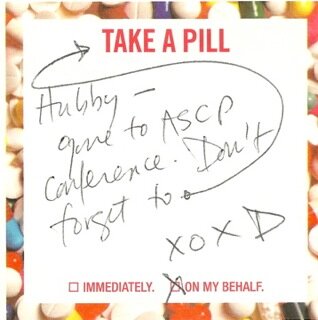Annual Psychiatric Conference Reveals State Of The Art

By D. Essem
November 2012, Dissociated Press. Shrinks from throughout the country gathered in Manhattan the weekend before Halloween for the Always Searching for Better Psych Meds (ASBPM) conference. This year’s theme: Psych Meds Update: State-of-the-Art 2012.
As a group, psychiatrists tend to be pleasant and open-faced. Some even make eye contact. Still, there was a buzz, albeit non-alcoholic, at the breakfast orientation. “State-of-the-Art” promises a lot given the current state of play in psychiatry. Research on brain and behavior yields hard data on a geological time scale. Those few nuggets make a nice rattle inside an Altoid tin. Winnow what’s clinically useful, and that fills a small lipstick.
Occasionally, there are unexpected breakthroughs. Leading centers of science and learning ignore them. The usual psychiatry conference smears lipgloss in a way that distracts (the hosts hope) from the lack of new facts. A successful one adds amenities: good coffee, tasty treats and lots of potty breaks.
“Fingers crossed,” sighed I. M. Trapt, MD, a shrink with fatalistic salt-and-pepper hair, “for a new drug that decreases patient suffering, increases capacity for love and work, and is covered by insurance.”
Conference clinical pearls included:
Recognition and Treatment of Sexual Morbidity Associated With Psychiatric Illness: “Relational issues should be entertained as a possible etiology.”
Psychiatric Genomics: “Most research findings are false.”
Impulsivity in Psychiatry: “Impulsivity is not poor judgment, it’s no judgment.”
Recent Developments in Psychopharmacology of Depression: “Internists and family practitioners think depression is easy to treat. It’s not. We might have lots of drugs but that doesn’t mean any of them work.”
Evaluation and Treatment of Dementia: The Best Of What We Know: “I’ve lost my train of thought. What was I talking about?”
ASBPM Business Meeting: “We are breaking even. There will be a meeting next year.”
Attendee surveys declared the conference a success:
“Appallingly candid and unpretentious.”
“You can’t trust most research findings? Oh. My. God.”
“I was shocked, shocked, to learn the patient’s relationship, not just medical problems or medication side effects, may cause sexual dysfunction. What next?”
“Awesome coffee.”
The event was held at the Grand Central Station Hyatt, a state-of-the-art hotel and conference center. The only complaint came from I. M. Trapt, MD standing in line at the ladies’ room: “When will architects realize women go 3.14 times more than men? The research is conclusive.”
A friend cut the line to give her a hello hug, making Dr. Trapt yelp, “Don’t squeeze!”
That got a laugh from the queue. “Most architects are male, but that’s hardly an explanation,” she continued in disgust. “While their women cross their legs waiting in line, those men are pawing the ground too. Somewhere else. Maybe at a bar.”
She shook her head and pulled a lipstick from her purse.